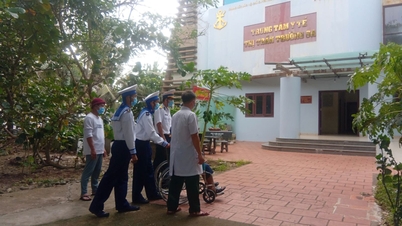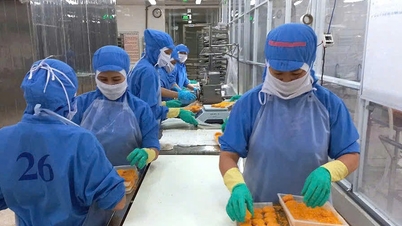Pneumonia is one of the common respiratory diseases today, especially in cold and rainy weather, which makes children and the elderly susceptible to the disease. If not detected and treated promptly, the disease can lead to serious complications, even life-threatening. Therefore, prevention and early detection of pneumonia is very important.
Pneumonia is an inflammation of the lung parenchyma, including the alveoli, alveolar sacs, alveolar ducts, interstitial connective tissue, and terminal bronchioles. The alveoli and airways in the lungs may fill with fluid or pus, causing symptoms such as productive cough, fever, chills, and difficulty breathing.
Pneumonia is usually caused by bacteria, viruses or fungi. The disease can range in severity from mild to severe. Pneumonia is especially dangerous in infants, young children, people over 65 years old or people with underlying diseases or weakened immune systems.

Pneumonia is a common respiratory disease, easily encountered in cold, humid weather.
Symptoms of pneumonia
Symptoms of pneumonia can range from mild to severe, depending on the type of pathogen, age, and overall health of the patient. Here are four typical symptoms:
1. Cough, change in color of sputum or respiratory secretions
Cough is the earliest and most common symptom of pneumonia. The patient often has a cough that is either dry or productive. In many cases, the sputum is rust-colored, yellow, green, or purulent and has a foul odor.
2. Chest pain, increasing difficulty breathing
People with pneumonia often feel chest pain at the affected area, the level of pain can range from mild to severe. In addition, the patient has difficulty breathing, mild cases have shortness of breath, more severe cases can have rapid, shallow breathing, even respiratory muscle contraction.
3. Fever
Fever is a common symptom in pneumonia patients, which can be intermittent or continuous, accompanied by chills. Body temperature can rise to 40 - 41 degrees Celsius, while in some cases it is only a mild fever of 38 - 38.5 degrees Celsius - often seen in the elderly, children or people with immunodeficiency. When the patient has a high fever, the skin can be red, hot, if the lips and extremities appear purple, it is a warning sign of respiratory failure.
4. Dry lips, fatigue, loss of appetite
Some patients with pneumonia may have skin bleeding, dirty tongue, bad breath, accompanied by fatigue, loss of appetite, nausea, headache or body aches. Children with pneumonia sometimes have symptoms of impaired consciousness.
Dangerous complications of pneumonia
Even with treatment, people with pneumonia - especially those at high risk - can still experience complications such as:
- Lung abscess: Formation of a pus-filled cavity in the lung parenchyma.
- ARDS respiratory failure: Due to widespread inflammation causing hypoxemia, especially in people with chronic lung disease COPD.
- Sepsis: Bacteria from the lungs enter the bloodstream and spread rapidly to other organs.
- Pleural effusion: Fluid builds up between the lung and the pleura, causing difficulty breathing.
Pneumonia can be life-threatening, especially in the elderly, smokers or patients with heart failure, when the lungs are severely damaged, hindering the ability to breathe.
Doctor's advice
To prevent pneumonia, pay attention to the following measures:
- Get a flu shot every year to prevent pneumonia caused by the influenza virus.
- Wash your hands frequently to reduce the risk of infection, especially when touching your eyes or nose.
- Use an alcohol-based hand sanitizer because it is more effective than soap in killing bacteria.
- Stop smoking, as smoking increases your risk of respiratory infections.
- Maintain a healthy lifestyle: Get enough sleep, eat plenty of fruits, vegetables, whole grains and exercise regularly to boost your immune system.
Summary: Pneumonia is a dangerous disease that can easily break out in the cold season. However, the diagnosis is not too complicated. When there are signs of suspicion, the patient should immediately go to a medical facility for examination and timely treatment to avoid unfortunate complications.
Source: https://suckhoedoisong.vn/4-trieu-chung-dien-hinh-canh-bao-mac-viem-phoi-169251105083435509.htm


















![[Video] Hanoi Oncology Hospital receives Second Class Labor Medal](https://vphoto.vietnam.vn/thumb/402x226/vietnam/resource/IMAGE/2025/11/08/1762561557241_img-2021-9778-png.webp)


















![[Photo] Da Nang: Hundreds of people join hands to clean up a vital tourist route after storm No. 13](https://vphoto.vietnam.vn/thumb/1200x675/vietnam/resource/IMAGE/2025/11/07/1762491638903_image-3-1353-jpg.webp)












































































Comment (0)